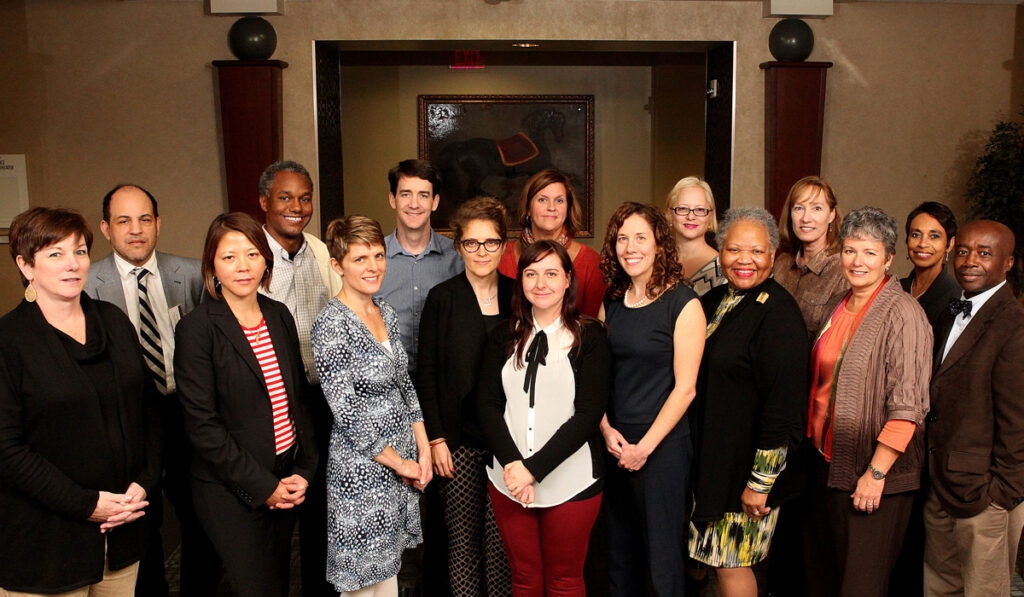“You must collaborate to achieve health equity,” says Arie Nettles, Ph.D., director of the Vanderbilt University Medical Center Office of Inclusion and Health Equity. “It’s more than symptoms, diagnoses and treatments. We have to focus on our interactions and collaborations.”
Nettles, an alumna of an executive leadership program through the Disparities Solution Center at Massachusetts General Hospital, is one of 16 research and clinical professionals from across the U.S. and Canada leading the Pediatric Health Equity Collaborative (PHEC), a network focused on improving data collection to reduce health disparities in pediatrics.
“We want to provide information on a large scale on how to be more thoughtful about collection and interpretation of pediatric data,” Nettles said. The PHEC’s inaugural meeting was hosted by Monroe Carell Jr. Children’s Hospital at Vanderbilt.
“We want to provide information on a large scale on how to be more thoughtful about collection and interpretation of pediatric data.”
A Call to Action
More than half of children under one year old in the U.S. now belong to minority groups as defined by the U.S. Census Bureau (non-white and non-Hispanic). Despite the growing population, disparities in pediatric care remain extensive, pervasive, and persistent.
To identify and address disparities, health care organizations need to collect accurate and reliable data, Nettles says. Yet data collection at pediatric hospitals varies widely. Nettles says that through the Disparities Solution Center, she found a network of colleagues eager to focus specifically on pediatric data collection.
“There were lots of health care organizations taking the training, but I was the only one in pediatrics,” Nettles said. “That planted the seed. I knew we needed a dedicated group.”
Six Core Domains
With help from the Center, Nettles assembled experts for the PHEC. Over a two-year period, the PHEC met multiple times in person and over the phone. They identified common themes based on their collective experiences, ultimately selecting six core domains for pediatric data:
- Caregiver(s)
- Race and Ethnicity
- Language
- Sexual Orientation and Gender Identity
- Disability
- Social Determinants
The group published their suggested data framework in BMC Pediatrics. The article outlines their rationale for collecting data within each domain plus common challenges in pediatric settings and sample practices for each.
Impact of Enhancing Data
Nettles says simple changes can make a big difference. When collecting caregiver data, for example, specificity is key. “I recall a child placed in foster care with a developmental disability. But the child and siblings were placed with a divorced step-grandparent, who was the closest family,” Nettles said. “That’s a significant piece of demographic information that speaks volumes about what is happening in that child’s life.” Basic demographic forms miss such opportunities, Nettles says.
Another example, cited in the article, involved a 10-year-old boy whose asthma was not improving – even though the child received an appropriate diagnosis and a prescription for a nebulizer. By collecting additional social determinant data, providers learned the family did not have electricity.
“Don’t assume. We have to ask the right questions, in a non-threatening way, to make sure we have the most accurate information possible.”
Nettles offers a simple solution: “Don’t assume. We have to ask the right questions, in a non-threatening way, to make sure we have the most accurate information possible.”
Building on Shared Experience
The PHEC recognizes that each health care organization must tailor data collection based on their patient population and available resources (including EHR capacity). While the PHEC data framework is a starting point, the group is hopeful it will spark conversations about shared experiences and methodological changes that can chip away at pediatric health disparities.
“We’re looking forward to what we can do to be advocates and repair these gaps. It’s time to disrupt conventional ways of looking at and collecting data,” said Nettles.
“It’s time to disrupt conventional ways of looking at and collecting data.”







